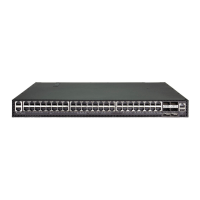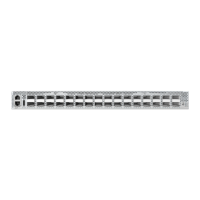C
HAPTER
6
| VLAN Configuration
Protocol VLANs
– 178 –
COMMAND USAGE
◆ To configure protocol-based VLANs, follow these steps:
1. First configure VLAN groups for the protocols you want to use
(page 836). Although not mandatory, we suggest configuring a
separate VLAN for each major protocol running on your network.
Do not add port members at this time.
2. Create a protocol group for each of the protocols you want to assign
to a VLAN using the Configure Protocol (Add) page.
3. Then map the protocol for each interface to the appropriate VLAN
using the Configure Interface (Add) page.
◆ When MAC-based, IP subnet-based, and protocol-based VLANs are
supported concurrently, priority is applied in this sequence, and then
port-based VLANs last.
CONFIGURING
PROTOCOL VLAN
GROUPS
Use the VLAN > Protocol (Configure Protocol - Add) page to create protocol
groups.
CLI REFERENCES
◆ "protocol-vlan protocol-group (Configuring Groups)" on page 858
PARAMETERS
These parameters are displayed in the web interface:
◆ Frame Type – Choose either Ethernet, RFC 1042, or LLC Other as the
frame type used by this protocol.
◆ Protocol Type – Specifies the protocol type to match. The available
options are IP, ARP, RARP and IPv6. If LLC Other is chosen for the
Frame Type, the only available Protocol Type is IPX Raw.
◆ Protocol Group ID – Protocol Group ID assigned to the Protocol VLAN
Group. (Range: 1-2147483647)
N
OTE
:
Traffic which matches IP Protocol Ethernet Frames is mapped to the
VLAN (VLAN 1) that has been configured with the switch's administrative
IP. IP Protocol Ethernet traffic must not be mapped to another VLAN or you
will lose administrative network connectivity to the switch. If lost in this
manner, network access can be regained by removing the offending
Protocol VLAN rule via the console. Alternately, the switch can be power-
cycled, however all unsaved configuration changes will be lost.

